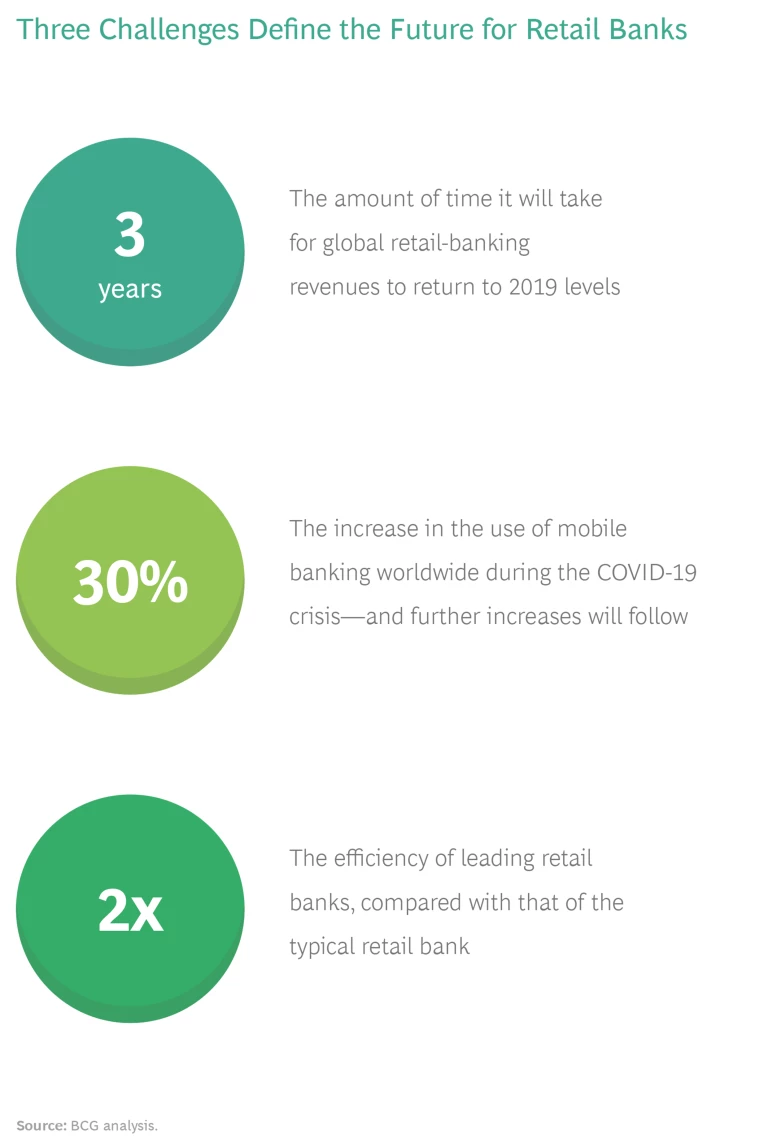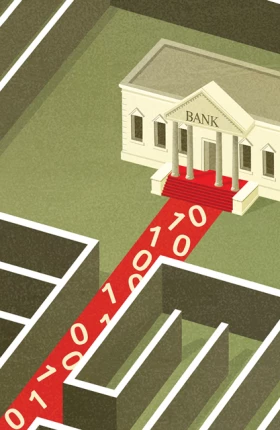Retail banks around the world reacted to the COVID-19 crisis with speed, dexterity, and purpose, while remaining true to their environmental, social, and corporate governance goals. Now, as the new reality starts to take shape, banks face further challenges. The pandemic shock has accelerated changes already underway and sparked new ones. Institutions’ revenues are under pressure, and global banking revenue pools have already taken a significant beating. Even under the most optimistic scenario, those pools are not expected to return to precrisis levels until 2022.
Customers are moving to digital channels faster than they have in the past. Online banking use has risen by 23%, and mobile banking use is up by 30%. (See the exhibit.) These changes are likely to be permanent, accelerating the migration to digital channels by three to four years over precrisis trends.
As customers move online, banks’ position at the intersection of the customer and financial services is coming under attack. A stacked industry landscape, with different types of players competing at each level, is taking shape. Nonbank insurgents are making strong inroads in distribution, threatening to commoditize many banking products. Perhaps above all, banks need to rethink and realign costs—starting now. Current cost structures are not sustainable.
Retail banks can achieve their goals by identifying value streams—a series of value-adding activities that they can undertake to produce a result that customers want—and redesigning, digitizing, and integrating them from front to back. The typical bank has fewer than ten value streams, including joining the bank, borrowing, saving, and making transactions. In our experience, front-to-back value stream redesign can typically deliver a reduction in costs of 15% to 25% and an increase in the customer advocacy scores of 20 to 40 percentage points.
Value streams are also vehicles for change. Banks can consolidate digitization initiatives, form integrated cross-functional design and delivery teams, and have a single view of investments in current and reimagined products and services. Critical new capabilities, such as data-driven customer engagement, can be built as part of the digitization program and leveraged across the appropriate value streams. Management can prioritize the backlog of in-process digitization initiatives according to an objective, consistent assessment of their desirability, viability, and feasibility.
Leading banks are already organizing solution delivery around value streams and taking customer engagement to the next level. These banks have rethought their functions end to end from a customer’s perspective in order to define a limited number of critical value streams. They have assigned cross-functional teams that use agile ways of working to each value stream, and they have given those teams responsibility for product management and change, including product revenues and delivery.
We explore all these changes and their ramifications in our 2021 report on global retail banking.







